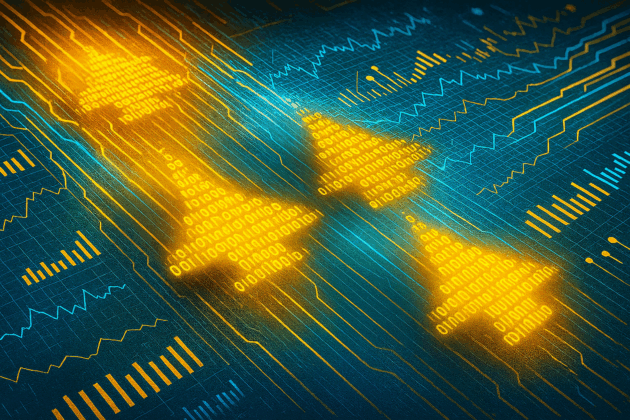ポイント
- Defence data enables faster, more informed decision-making. KX helps transform this data into actionable insight in complex environments.
- Large volumes of structured and unstructured data, often siloed across legacy systems, make it difficult to manage, analyse, and share effectively.
- KX provides real-time data processing and analytics, helping defence personnel and decision-makers access critical insights without delays.
- Interoperability between platforms, sensors, and partners enables trusted, mission-ready data. KX supports integrated environments that improve situational understanding.
- As AI and automation advance, defence stakeholders will increasingly rely on scalable, real-time data analysis to enhance resilience, agility, and mission readiness.
The changing data landscape
The warfighter requires toughness, resilience, the right training, reliable equipment, a clear mission statement, and freedom to manoeuvre. In this increasingly interconnected and unstable world, ‘knowledge’ has always been an enabler but is becoming increasingly important as a focal point to make the most of resources, reduce risk, enhance effectiveness, and win.
Decision makers, whether strategic, operational, or tactical, have long been outpaced by the volume of data available. The Future Operating Environment 2035 report recognised that the ‘5Cs’, whilst important, should not be applied to every environment. Additionally, the Global Strategic Trends: Out to 2055 report recognises that access to data is a key component of global power for state and non-state actors. The data environment is becoming increasingly:
- Complex. The adoption of AI and new techniques to harness the power of data, and systems designed for prosecuting more of the electromagnetic spectrum, results in increased data complexity
- Congested. A greater level of interconnectivity of an exponentially growing number of data-gathering and generating devices adds to the data load
- Contested. The use of data and the electromagnetic spectrum is no longer a purely military operating environment. Non-state actors utilise capabilities that generate data. Activity is two-way, and data is being weaponised.
Almost every system utilised by militaries generates a wealth of data, from highly classified capabilities, such as satellites and large ISR platforms, to standard-issue military equipment, personal wearables, open-source online content, and targeted nefarious data feeds designed to misinform.
Data comes in many forms, 1000/60/60/24/7/365. The ability to manage, interpret, and share data at an ultra-fast pace is the key to the 1996 interpretation of Boyd’s Observe, Orientate, Decide, Act (OODA) Loop. The Orientate stage draws data from a range of sources, and feedback is provided from the Decision and Action stages. Identifying and utilizing relevant data as part of the OODA Loop enables decision makers to gain a strategic advantage facilitated by an information advantage.
The war in Ukraine and ongoing developments in the cyber and space domains have accelerated thinking on previously published data-related doctrine. Speed of change presents challenges and opportunities.
Data, data everywhere, and not a bit to analyse
Decision-makers of all levels need data to confirm their understanding and justify their actions. Can all the collected data be ingested, organised, queried, and analysed in time? Data from military and open sources is collected in different formats, including batch data, streaming data, sensor and asset tracking data, documents, files, and logs.
Textural and non-textural unstructured data sources include emails, text documents, social media content, transcripts, message text files, image files, video files, and multimedia files. This provides a challenge for management and interpretation. Proprietary, classified, or legacy process barriers often make the sharing of data a complex and time-consuming task, if achievable at all. Querying the relevant data quickly enough to inform the decision cycle is also a challenging task.
We’ve focused on delivering rapid insights and analysis for 30 years in highly regulated and fast-paced financial markets. We now support defence in secure environments.
This adds risk for the decision maker and warfighter, which, in the worst case, could cost lives, and, in the best case, result in significant inefficiencies in supporting operations. At KX, we’ve focused on delivering rapid insights and analysis for 30 years in highly regulated and fast-paced financial markets. We now support defence in secure environments. This capability can stitch together the sensors, deciders, and effectors.
The scale of data will continue to increase. According to global data growth forecasts, “The total amount of data created, captured, copied, and consumed globally is forecast to increase rapidly and reach 186 ZB in 2025. Critically, and for the first time, over half of this data will be generated from the Internet of Things (IoT); that is, it will, for the first time, be machine-generated, rather than human-generated. Over the next five years, up to 2028, global data creation is projected to grow to more than 394 ZB”. The 2021 Data Strategy for Defence listed these strategic outcomes for data by 2025:
- Data is curated, integrated, and ready for human and machine exploitation
- Data is treated as the second most important asset, only behind our people
- Our people are skilled and exploiting data to drive advantage
- Defence are data leaders with partners, allies, and industry
Defence is pursuing these outcomes, and there are success stories. The partnership between end-users and industry has ably demonstrated the utility of the NEXUS Combat Cloud Data Platform, incorporating KX databases, and RAVEN virtual Communications Node. This has demonstrated rapidly developing defence capabilities, utilising proven and trusted technologies.
The 2025 Strategic Defence Review has put the importance of data front and centre, with a focus on integration. Decision makers need to see analysis without being coding gods, but training people to use data management systems is key. Natural language models for AI, and simple and integrated code is required to ensure data can be managed, queried, and responses understood by operators without a long-term training requirement for high-end specialists.
The Single Information Environment (SIE) review of just 100 Defence systems identified that less than 25% of systems had data that was automatically discoverable. The remaining systems required manual intervention, and 33% did not follow international standards for information4. Whilst data standards play an important role, the ability to ingest and use vector databases that are prevalent in the fintech sector allows vast quantities of unstructured data (that does not conform to prescribed formats) to be ingested and analysed in near real time.
As the number and complexity of sensors and systems grow, there is a greater need for commanders and decision-makers to be supported by data that can be rapidly ingested, managed, and queried to provide information advantage over adversaries, or to smart-sweat their assets to maximise efficiency. Speed is key, but speed in the wrong direction is unhelpful, so data must also be accessible, accurate, trusted, and secure.
As GenAI becomes integrated into defence systems, we’re ready to support structured and unstructured data for real-time and historical data management and analysis.
Discover deeper insight, intelligent hindsight, and greater foresight. Learn more about KX Aerospace & Defence.









